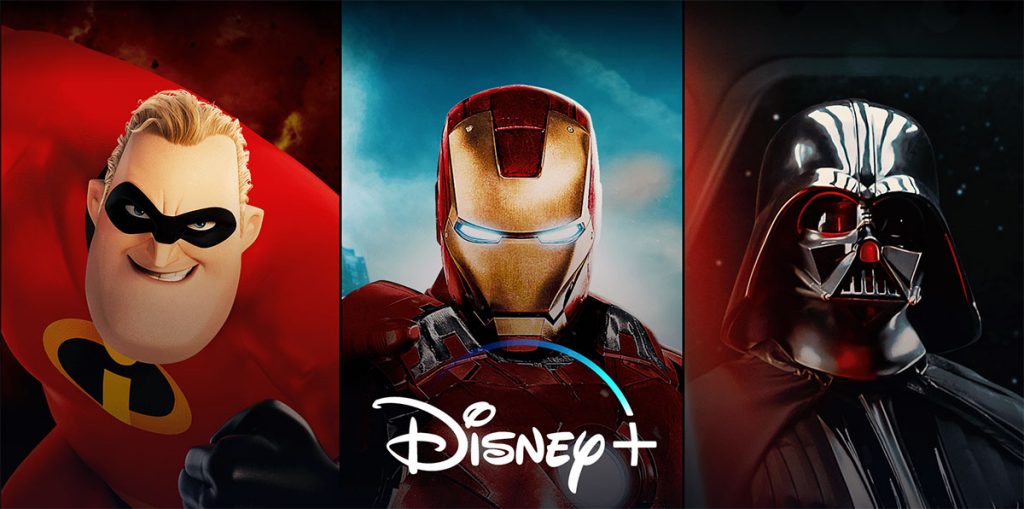
After more than 35 years of operation, TBI is closing its doors and our website will no longer be updated daily. Thank you for all of your support.
Disney+ lands 54m subscribers but Mouse House left reeling by Covid-19
Disney+ has racked up more than 54 million subscribers since its launch barely six months ago, but it was not enough to plug the gap in the company’s balance sheet left by the Covid-19 pandemic.
The ongoing health crisis has left Disney reeling, with the parks segment alone losing out on an estimated $1bn in revenue, according to new CEO Bob Chapek. Considering other factors including lost revenue from shuttered cinemas across the globe and decreased broadcast advertising revenue, Chapek said the cost of the Coronavirus “was as much as $1.4bn.”
Overall, the company’s revenue stood at $18bn – some $400m higher than expected – but earnings per share were well under Wall Street expectations at $0.60 per share, rather than $0.89 per share.
Hit new programming like The Mandalorian certainly drives the Disney+ business – and we’ll continue to make planned investments to drive subscription rates and retention
Disney CEO Bob Chapek
Streaming ahead & cinematic calls
On a more optimistic note for Disney, its DTC segment continues to surpass expectations with Christine McCarthy, senior EVP and CFO, noting on the investors’ call that it had a global total of 54.5 million Disney+ subscribers as of 4 May. The official total on the Q2 report – dated March 28 – was 33.5 million, though McCarthy noted that the company decided to update the numbers given that it had “executed a number of launches” since the end of March, including roll-outs in France and India.
Chapek praised the success of the fledgling streamer, which he said had “exceeded even our highest expectations”.
“We have been thrilled with the performance of the service since our initial launch in November and we continue to expand into other markets. In late March, as planned and despite Covid-19, we had an incredibly successful launch of Disney+ in Western Europe, followed by a highly successful launch in India.”
However, he declined to update the company’s targets for Disney+ or give a projection of when the SVOD will reach profitability. He said: “We know that in terms of the actual investment in Disney+ that new programming, hit new programming like The Mandalorian, certainly drives that business. And so I think we’ll continue to make the planned investments into Disney+ as we always have with new and exciting programming to drive those subscription rates and retention.”
McCarthy added: “While we have had a really good start to Disney+ we still think it’s early and we’ll update when it’s appropriate.”
Chapek also spoke about the relationship of the streamer and the company’s planned cinematic releases following the decision to move upcoming action movie Artemis Fowl from the big to the small screen.
He noted that while the Kenneth Branagh-directed title is moving to Disney+, this is not an indication of an overarching strategy with upcoming “tentpole” titles such as Mulan and Black Widow rescheduled for theatrical release later in the year. Chapek said that going forward “we’re going to evaluate each one of our movies on a case-by-case situation as we are doing right now during this coronavirus situation… we very much believe in the power of [Disney+] for our big movies.”
Hulu keeps the Mouse House happy
The company’s other streaming services have also benefited from the boost provided by Disney+.
Hulu now has a total of 32.1 million subscribers, a year-over-year increase of 27% and seen as an endorsement of Disney’s move to fully acquire the streamer in mid-2019.
Meanwhile, sports streamer ESPN+ sits with 7.9 million subscribers, more than double its Q2 2019 total of 2.2 million – likely benefitting from Disney’s $12.99 per month bundle of all three SVODs. This is also indicated by a reduced ARPU for both ESPN+ and Hulu, with users opting for the better value bundle.
Despite the success of the DTC segment, research firm MoffettNathanson issued a cautionary note, writing that Disney+ is “rightly getting stronger during the pandemic panic, but that’s not going to generate enough free cash flow to offset losses elsewhere.”
It has been a turbulent few months for Chapek, who took over from Bob Iger as CEO in February, though Iger has remained largely in control after agreeing to stay on to see the company through the Covid-19 crisis.




